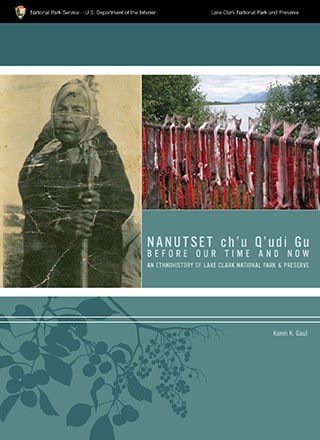
"Nulchina, The Sky Clan people, they say, stayed in the sky on a frozen cloud; and they drifted over this way to a little warmer place, and the frost melted away from under them, and they landed on top of Mount Susitna, they say. And they went down the Inlet, and they came to Iliamna. And they called the people already living there Dudna…." - Peter Kalifornsky, Dena'ina elder Read This Book
Summary Alaska Natives have lived in south central Alaska for thousands of years. Historic and current residents are primarily Dena'ina Athabascan, with some Yup'ik speaking peoples along the southern and western shores of Iliamna Lake. Their presence in and around newly established national park areas has meant the need for management practices that can address the complexity of cultural histories and life-ways with sensitivity and intelligence. The National Park Service seeks to develop materials that document past and current cultural heritage and to protect the material and structural remains of those cultures in and near Lake Clark National Park and Preserve. In this work the park's cultural anthropologist Karen Gaul gathered and shares information on a wide range on culturally important topics. The book gives an historical overview of the region, profiles area villages, explains subsistence-based culture and economy, explores family and community ties, examines identity as related to language, and identifies associations and meanings people have from living closely with the lands that are now protected by the park. This ethnohistory is meant to serve as a resource for community residents, park managers, and the greater public. It is a companion to West Cook Inlet: Ethnographic Overview and Assessment for Lake Clark National Park, which was published one year prior to this book. Chapters
Publication Details Author: Karen Gaul, cultural anthropologist for Lake Clark National Park & Preserve |
Last updated: December 14, 2017
